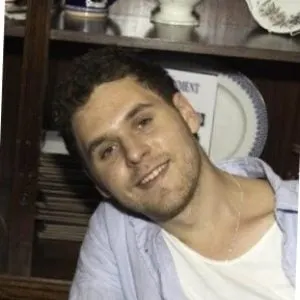Digital artwork in a physical gallery, you say? Surely not!
But actually, many physical art galleries have put on NFT exhibits in the past year. And on Monday at the Non Fungible Conference in Lisbon, the NFT artist Justin Aversano announced he will open one in California.
Aversano became very popular last year with his photo project Twin Flames, which photographed twins across the world and generated millions of dollars in sales, making his photography among the most expensive ever sold. Aversano already has experience with his NFTs showing up at physical galleries: Christie’s auctioned one of his works last October.
Now the photographer will set up physical spaces to exhibit his photography NFTs—in an attempt, he says, to bridge the chasm between meatspace and metaverse.
“It’s gonna be a place that’s a home for artists, collectors, and newbies,” Aversano told Decrypt after his onstage talk at NFC Summit. “This is for people who’ve never bought an NFT, to let them walk into a space, find a piece that speaks to them, swipe their credit card, and it ends up in their Ethereum wallet.”
That is indeed, roughly, how it will work. Through his company, Quantum, which curates and “drops” works by NFT photographers and now artists, Aversano plans to open up a 3,600-square-foot physical gallery in early June in Santa Monica.
Holders of “Quantum Key” NFTs, which number 1,000 in total, will get special access to a lounge that isn't open to other gallery-goers. The floor price for the Quantum Keys is already at 2.25 ETH apiece (more than $7,000) on OpenSea.
The sale of the Quantum Keys will pay for the venue. As for individual artwork sales, the galleries will follow the same model as Quantum uses online, where it takes a 20% cut of profits generated by NFT sales on its platform.
As Quantum COO Jonas Lamis frames it, “The number one thing we wanted to test is, Could we get the collector community together to cover the cost of using the space?”
Aversano wants to then duplicate these spaces in other major cities, adding that while NFT communities are great for organizing groups of like-minded people remotely, they often lack interpersonal connection, put off casual observers, and require endless filtering for scammers.
When people show up in person “you can’t dismiss them the same way,” Aversano said. “Unless you’re a jerk.”

